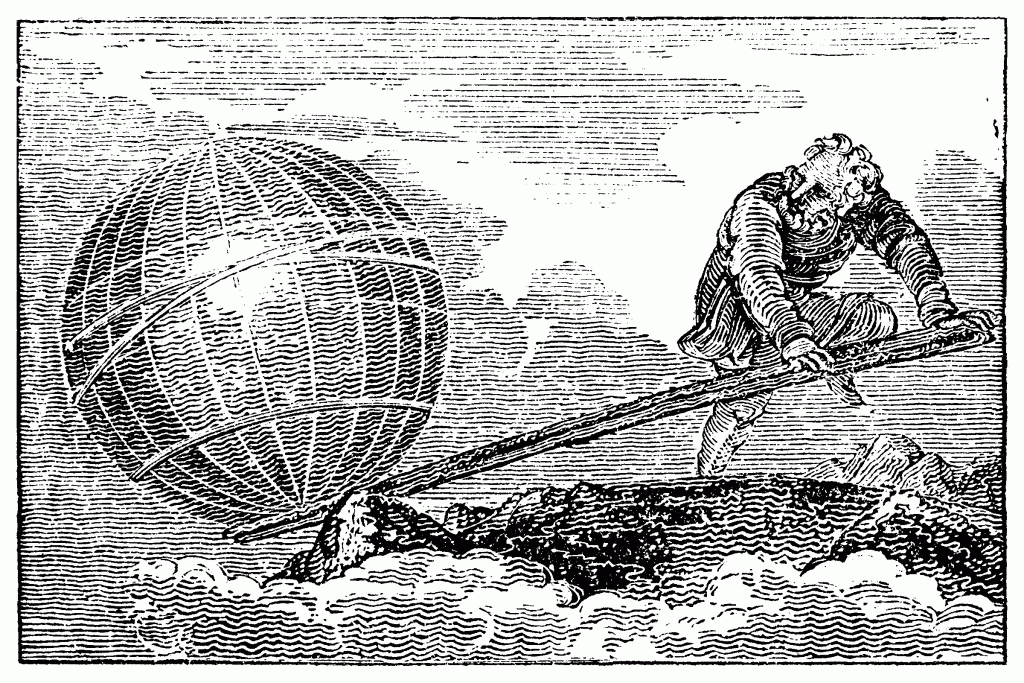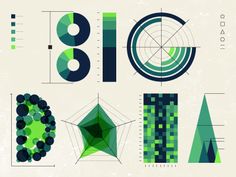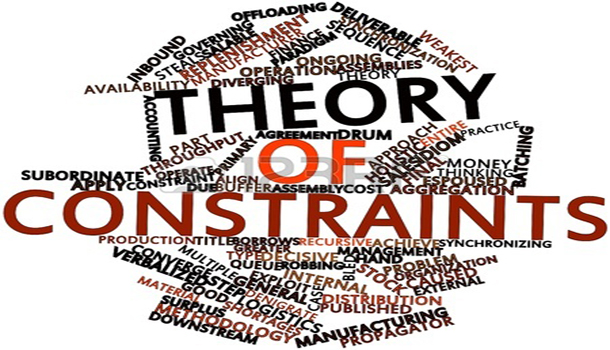
a fulcrum, and a place to stand, and I shall move the world.”
Here’s the last part of our three-part series about the Theory of Constraints (TOC). In the next couple of postings I’m going to dig right in to looking at what actually happens when I’ve used TOC at client companies. But there’s more gold to be mined from this topic—and I wanted to make sure I included in this series some common “fulcrums” –or common organizational assumptions that might sound familiar to you.
I also want to clear up some of what you might think. A common notion about constraints as they are viewed as a “negative.” However, constraints are neither good nor bad; they are just part of any organization. To clarify, try and picture an organization that has no constraints. What would you expect to see from this type of organization? The organization would produce with unlimited growth. In nature and in business, there aren’t any systems that produce at unlimited capacity and exhibit unlimited growth. So if there are no systems that produce at unlimited growth, then all systems have constraints.
As people working in systems, we can either acknowledge or deny that constraints exist. Regardless of the choice, constraints will have an effect upon the organization. If we want to grow our organization, then we might as well pay attention, right?
Too Many Places at Once
In my last blog posting, (Which Systems is More Complex?) I discussed the complex view of organizations, with the belief that change is incremental. Many changes will equal organizational improvement.
For contrast, I also discussed that with TOC in that there is only one or very few true constraints within any system. Improve the constraint, and you will make a significant impact upon the system.
What if you do not have a method to find the weakest link? Random chance allows that every once in a while, one of these actions will touch an organizational constraint and generate an impressive single-event, a growth-oriented action. The opposite might also happen: The same random choice may damage a constraint and produce a single, one-time negative result. If you think about the last 20 years of organizational history, I’m sure you can find a few such cases of one or the other, but more likely the latter. These events will be on the scale of urban legends within the organization. Like New Coke in the 1980’s, a disastrous merger like Daimler/Chrysler, or spinning off acquisitions to conserve cash.
The Cost Conundrum
Traditionally, most improvements are efforts to save cost. People think that if cost is removed from the delivery of a product or a service, it will result in higher profits. The vast majority of the U.S. Economy believes this to be true, and that, in conjunction with the high affinity for innovation, creates a compelling mix. But when we compare TOC with other improvement methods, its speed and accuracy bring about significant change – faster. We find our constraints and then we can react.
The TOC View of Problems
Traditional view: “A problem is something I don’t like”, or “Something that bothers me”, or the classic “Something that keeps me up at night.”
TOC view: “A problem is a conflict that prevents a system from reaching its desired objective.” With this definition, there is a second fundamental belief in physics that “There are no conflicts in reality.” There are only invalid assumptions about the conflict.
Assume Control
TOC translates conflicts as follows: If there is a conflict, then there must be an underlying assumption about that system that created the conflict. The solution comes from identifying the assumptions about the conflict, validating the existence of the assumptions, and eliminating the negative assumption about the conflict so that a solution can be built that will allow the system to reach its desired objective.
In every organization, managers face many issues on a daily basis. Typically, most of these issues stem from a single core problem (conflict) that the organization hasn’t been able to previously identify. Many managers are aware that these conflicts exist, however, these type of conflicts are very difficult to solve as most have conflicting objectives that result in compromises.
Does this sound like you?
The existence of conflict can be validated by looking back in time for periodic shifts in organizational philosophy. As an example, if in the past, your organization was emphasizing centralized management and now it is emphasizing profit-center autonomy, then these switches indicate the existence of an unresolved core problem. Efficiency is another example of an unresolved core problem. If at the beginning of any reporting period, organizational efficiency is emphasized, and then at the end of the month, all the rules are broken (forgotten) to achieve shipments and revenue targets. This again is a sure sign of an unresolved core problem.
TOC has a number of system tools that tackle the “new normal” head on. Next time, we’ll look at these tools as they applied to an automotive manufacturer—we’ll uncover their core assumptions and watch how their teams took control with TOC.
– Rick Denison
Rick is the “Dr. Who” of manufacturing operations and logistics. And while Rick doesn’t travel through time, he is adept at leading change – and saving time – in a diverse range of manufacturing environments through Lean manufacturing, Six Sigma, and TOC techniques. Rick’s posts address how demand-driven matters and draws from his background in process improvement, change management, project management, information systems implementation, and profitability analysis.





